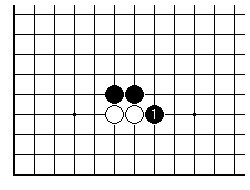

"What's hane?" You manage to make this important question heard. There's a discussion taking place about the merits of the respective hair styles of Jennifer Aniston and Buffy the Vampire Slayer, and it's threatening to become raucous.
Hane is pronounced "hah-nay", and it's one of a handful of Japanese terms that have no recognised translation. It means a play round the end of the opponent's stones.

Here Black 1 is a hane play. It leaves a cutting point, but clearly has more effect on White than simply extending once more would.
There was a good example of the tactical importance of hane in a game played here last week. GIUSEPPE, a newcomer, was playing KUMMERSUM on nine stones, to assess his grade.
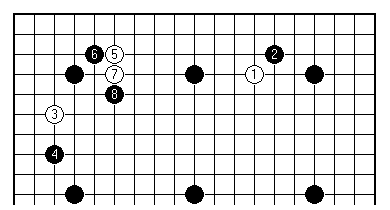
This is how the game started along the top side. Black 8 got him into trouble.
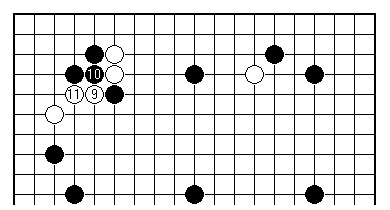
White 9 leaves Black little choice but to cut at 10. Black's shape is already marred by an empty triangle, and the tactical effect that has will be seen at once. The big question is how Black should continue from this position.
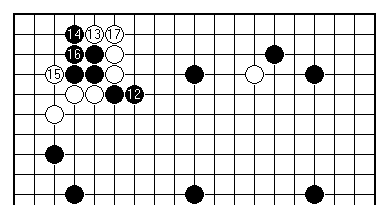
This is how it went in the game. Black 12 allows White the hane at 13, and then with 15 White destroys Black's corner as an effective fighting formation. Unless Black somehow manages to capture one of White's outside groups, there is little to be done about saving the corner after White protects at 17.

Instead of adding to the stone in the centre, Black should have played hane this way when the chance first offered itself. This move affects the shape of both sides; players speak of "vital points" when the occupation of a key position such as this makes a big swing in the balance of power.
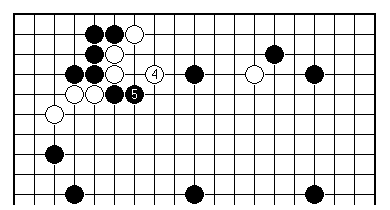
The continuation for White poses some difficulty. Black is suddenly strong in the corner; it isn't realistic for White now to try to kill Black there. This jump is the best continuation for White, and then Black can strengthen in the centre.
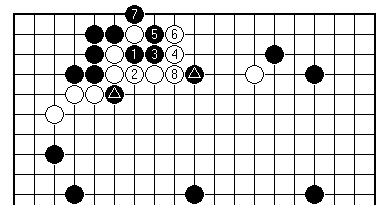
By the way, it would be bad for Black to play this way immediately, to capture a single white stone. White will happily sacrifice the stone on the second line. At the end of this diagram the two marked black stones have had their usefulness impaired. It is too grabby of Black to worry about this capture. Once the corner is secure the outside becomes the priority area.
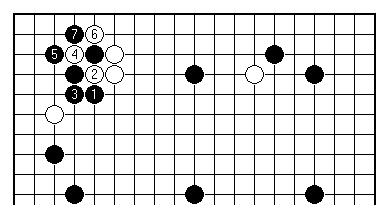
Going right back, Black should learn this way of coming out to the centre with the diagonal play 1. It has its own shape weakness after 2. Black however can cope, up to 7. There is a ko remaining in the position; but at this stage White has no useful ko threats.
First published 13 July 2000 as On Your Side on MindZine,
Go Learning
© Charles Matthews 2000.